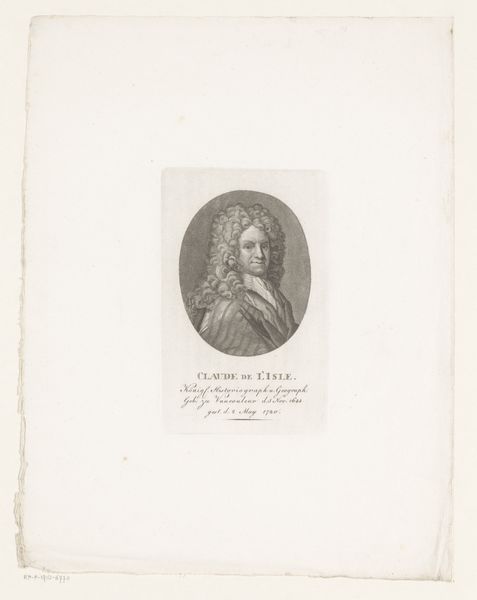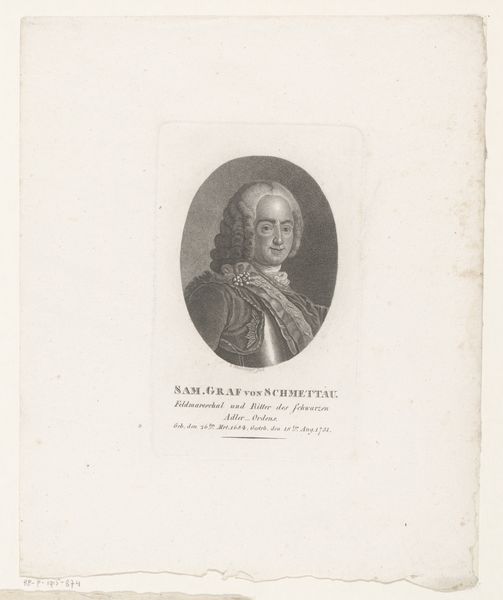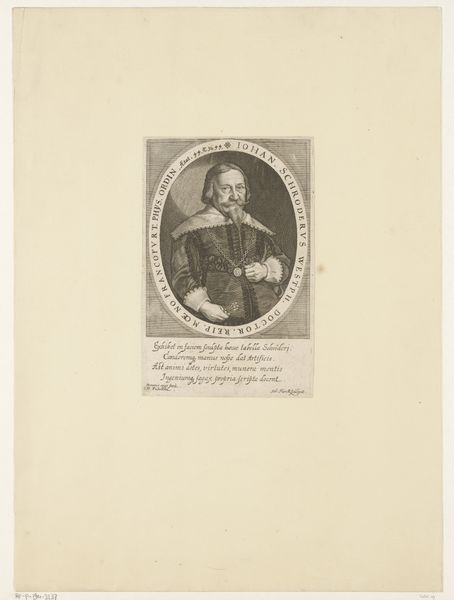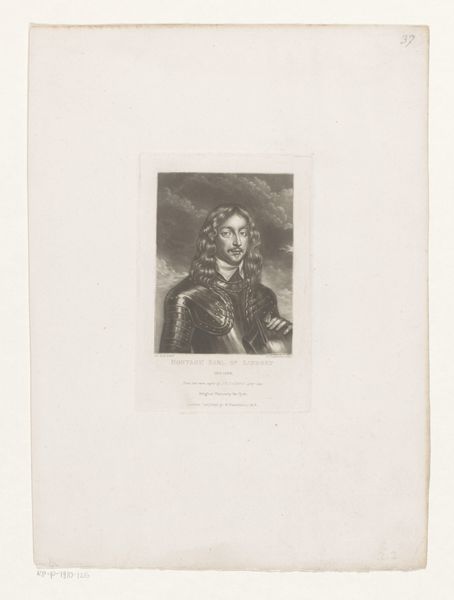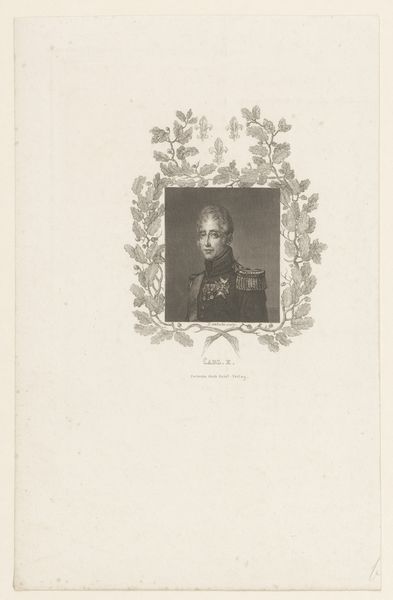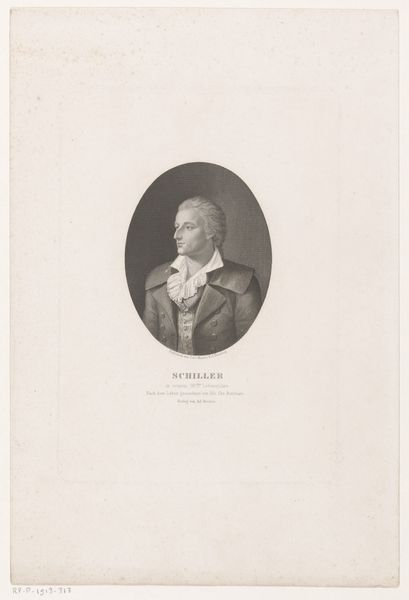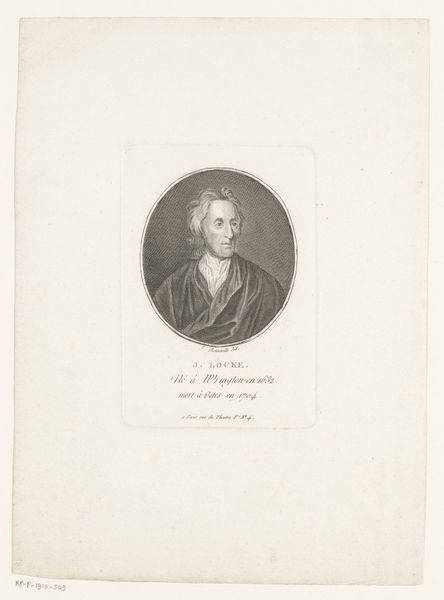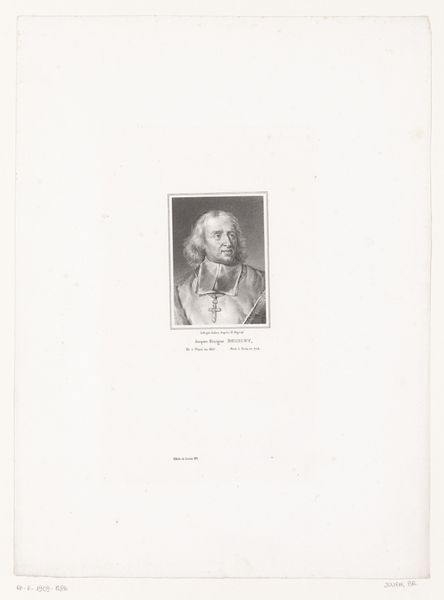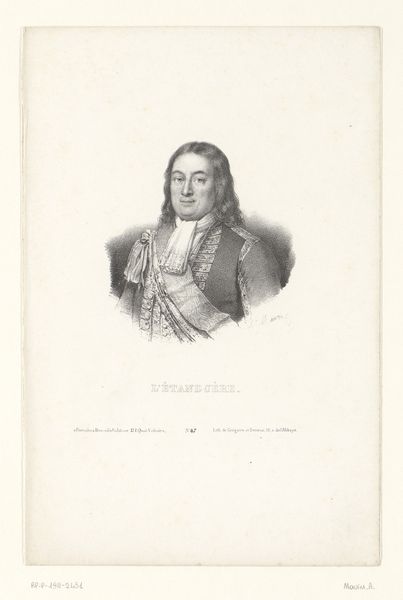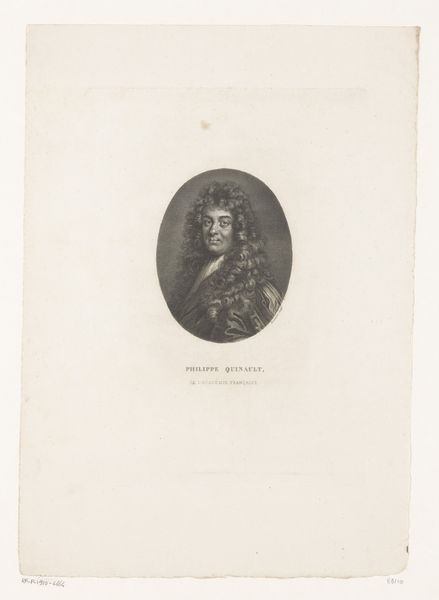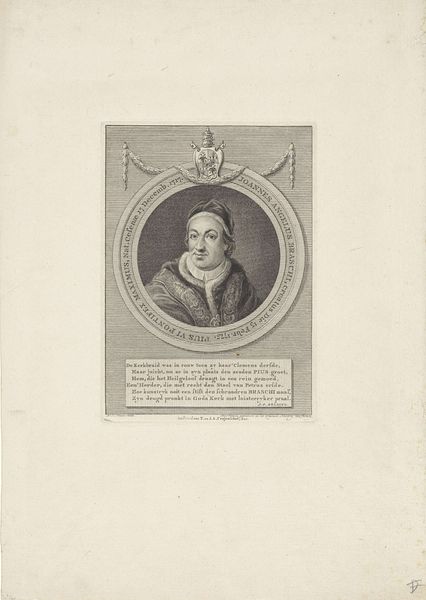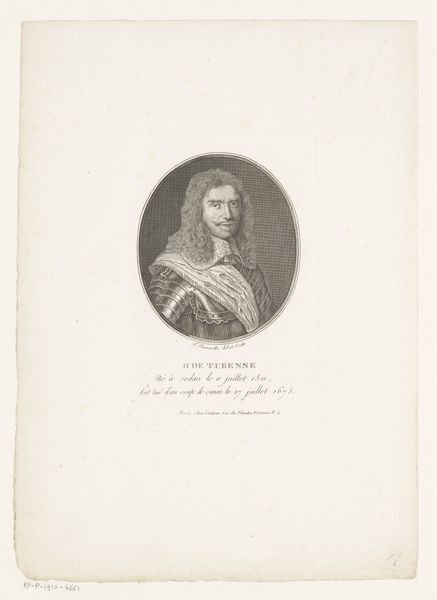
print, engraving
#
portrait
# print
#
romanticism
#
line
#
history-painting
#
academic-art
#
engraving
#
realism
Dimensions: height 157 mm, width 107 mm
Copyright: Rijks Museum: Open Domain
Editor: This is Charles Turner's engraving from 1811, "Portret van Giles Strangeways". It has a rather formal quality; the sitter's pose and armor seem like a clear nod to history painting. What strikes you when you look at this image? Curator: Well, the historical context is definitely key. We see Strangeways depicted almost two centuries after his life, filtered through the lens of early 19th-century Romanticism and its fascination with the past. How does this presentation potentially construct or idealize Strangeways? Is this historical accuracy or public image management? Editor: That's a good point. The choice of armor certainly seems deliberate, given his lifetime was largely devoted to politics. Are we meant to see him as some sort of heroic figure despite a slightly ignominious reputation, rather than merely a parliamentarian? Curator: Precisely. Consider the social and political function this image served when it was created and distributed. Was it to legitimize a lineage, to reinforce aristocratic ideals in a changing social landscape? Images like these weren’t simply about capturing a likeness. They actively shaped and reinforced historical narratives for a contemporary audience. What do you notice about the context? How does an awareness of institutions like parliament change how you look at the art? Editor: The context really adds another layer. Knowing it’s an engraving intended for wider distribution highlights how portraits functioned within broader social and political dynamics, like legitimizing families by associating them with heroism through these types of artworks displayed in houses for the enjoyment of elites and their associates. Curator: Absolutely. These images served a vital role in constructing and disseminating specific ideas about history and social order. Seeing beyond the immediate likeness into the mechanisms of cultural influence allows us to read artworks on a far more complex plane. Editor: It's fascinating how historical context changes the whole viewing experience. I'll definitely look at portraits differently from now on.
Comments
No comments
Be the first to comment and join the conversation on the ultimate creative platform.
